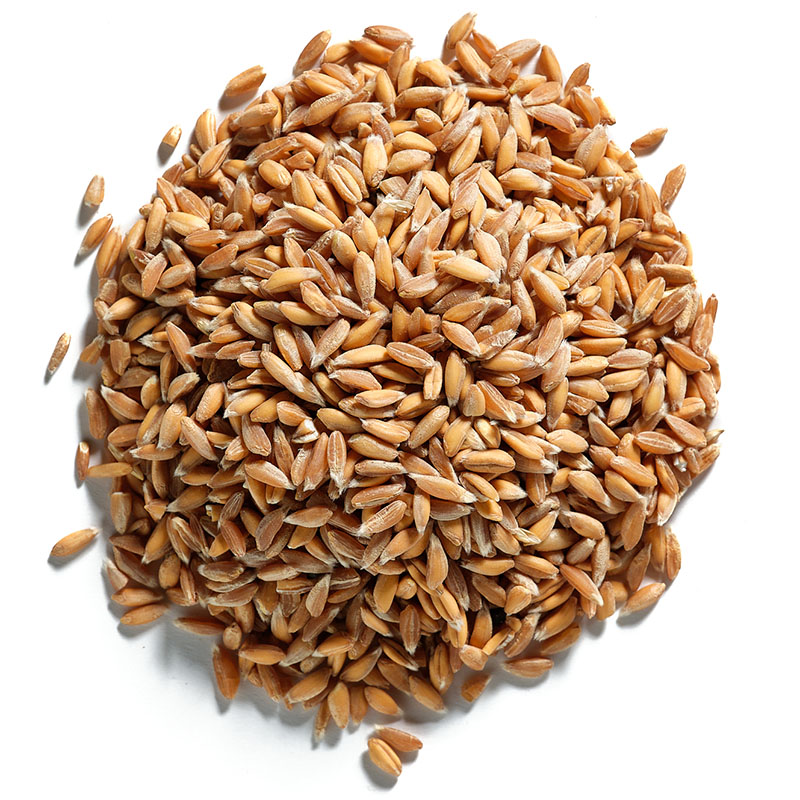Farro is the oldest grain to be known by Mediterranean Cultures, cultivated since the early seventh century B.C. in Mesopotamia, among the first cereal to be cultivated in Italy and progenitor of common wheat, it was the staple food of the Etruscans and Romans.
WHAT IS FARRO?
Farro is a “dressed” wheat, that is to say, the caryopsis is protected by the external husk; unlike wheat it does not separate from the grain during the threshing and will be removed only through the hulling processing. Farro is a rustic, low-demanding plant that well adapt itself to the hilly and marginal soils of our middle Italy lands. It well resists to cold and water stress conditions and has a tall stem that allows it to compete with weeds; therefore, it is suitable for organic agriculture.
THE SPECIES
Our main product is Farro of Triticum dicoccum species as it is suitable for stone milling and pasta making, but we grow and process all the main species present in nature, here below a short recap:
FARRO DICOCCO (Triticum dicoccum, which has a tetraploid genetic heritage) – is the most adapt species to be grown in our territory, progenitor of durum wheat, the most suitable for pasta making.
FARRO MONOCOCCO (Triticum monococcum, which has a diploid genetic heritage) – called small spelt, is by far the oldest cereal, from which T. dicoccum originated. It has a low glycaemic index and a very digestible gluten.
FARRO SPELTA (Triticum spelta, which has a hexaploid genetic heritage) – native to most soft wheats, it has a slightly larger caryopsis respect from T.dicoccum, and is ideal for bread-making and leavened products.
BENEFITS OF FARRO
Several scientific studies point to benefits associated with its consumption.
Farro has good protein level, unsaturated fatty acids, minerals, and micronutrients, it contains less gluten and low level of sugar and monosaccharides than standard wheats, making it easily digestible; it is low in calories and has high satiating power.
It helps reduce total lipids, triglycerides, and LDL cholesterol in the blood, therefore potentially limiting cardiovascular risk factors.
Farro starch is slowly digestible and provides a good supply of fiber, turning out to be an intestinal regulator.
Polyphenols, carotenoids and tocols have antioxidant properties and help moderate glucose levels after a meal; farro ensures a good contribution of these elements.
ORGANIC FARRO LUZI FOOD
We grow it organically on the hilly-mountainous fields of central Italy through the family farm and our network of farmers. It is processed in a traditional, careful, and sustainable way for people and the environment, in accordance with the highest international quality and organic production standards. We offer it in all its forms: from hulled grain, to pearled, to flour, or processed into whole, organic, rich in taste and nutrition, ready-to-eat, foods: pastas and specialty foods, flaked grains, puffed grains, couscous.



